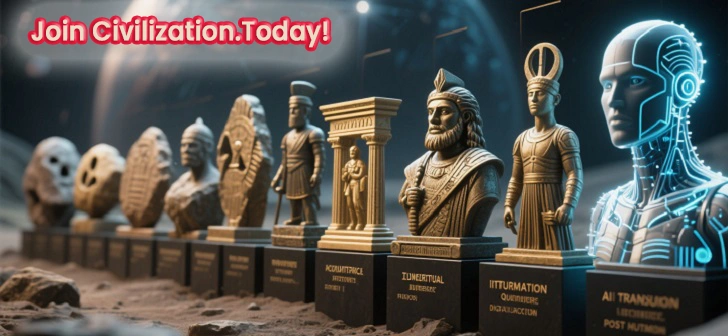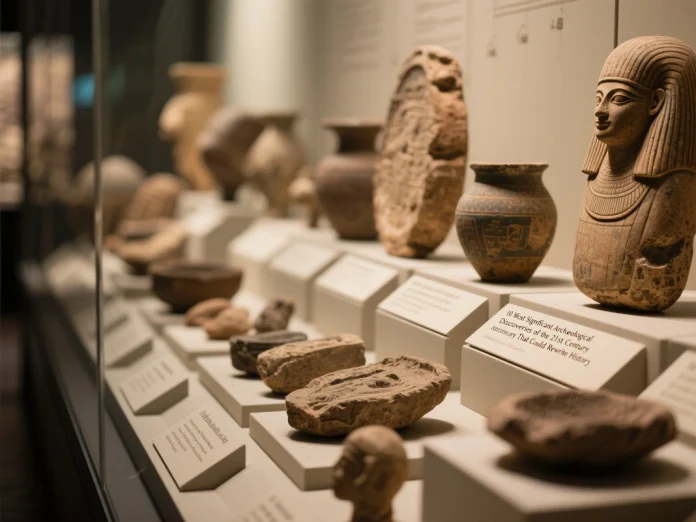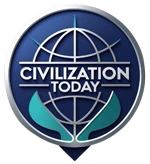In the ever-evolving field of archaeology, the 21st century has been nothing short of extraordinary. Across deserts, beneath oceans, and hidden within dense jungles, archaeologists have uncovered treasures and ruins that not only deepen our understanding of history but also challenge everything we thought we knew about human civilization. These significant archaeological discoveries are more than mere relics—they are time capsules, whispering untold stories from the past.
From lost cities once believed to be myths to cutting-edge technology revealing what lies beneath the earth’s surface, these discoveries are transforming the narrative of human development. Let’s journey through some of the most groundbreaking finds of this century and see how they’re reshaping our collective past.
1. The Gobekli Tepe Complex: The World’s First Temple
Nestled in southeastern Turkey, Gobekli Tepe dates back over 11,000 years—predating Stonehenge by several millennia. Its intricate stone pillars and carvings suggest an advanced society capable of large-scale construction long before the advent of agriculture.
This finding challenges the long-held belief that complex religious structures came only after humans settled into farming communities, making it one of the most significant archaeological discoveries in human history.
2. The Antikythera Mechanism’s Hidden Secrets
Although discovered in 1901, the Antikythera Mechanism—often called the “world’s first computer”—has been the subject of groundbreaking 21st-century research. Modern imaging technology has revealed its complex system of gears designed to predict astronomical positions and eclipses. These new insights prove that ancient civilizations possessed far more advanced scientific knowledge than previously thought.
3. The Lost City of Thonis-Heracleion
Once a bustling Egyptian port, Thonis-Heracleion vanished beneath the Mediterranean Sea over a thousand years ago. In 2000, underwater archaeologists began recovering statues, temples, and shipwrecks from the site, but recent 21st-century dives have brought even more treasures to light. The discovery rewrote Egypt’s coastal history and revealed the city’s critical role in ancient trade networks.
4. The Tomb of the Spinosaurus
In 2014, paleontologists in Morocco uncovered remains of the Spinosaurus aegyptiacus, revealing it as the first known swimming dinosaur. This find didn’t just change our understanding of dinosaurs; it redefined evolutionary biology. The discovery proved that prehistoric creatures adapted to diverse environments far earlier than assumed.
5. Machu Picchu’s Hidden Chambers
Peru’s Machu Picchu has always been a marvel, but recent ground-penetrating radar studies revealed previously unknown chambers beneath its iconic terraces. These hidden spaces may contain artifacts, burial sites, or ceremonial halls, offering a deeper understanding of the Inca Empire’s spiritual and political life.
6. The Staffordshire Hoard: Anglo-Saxon Gold
In 2009, a metal detectorist in England stumbled upon the largest hoard of Anglo-Saxon gold ever found. Containing over 3,500 items, the Staffordshire Hoard offers an unprecedented glimpse into early medieval craftsmanship, warfare, and culture. It’s a reminder that even in the modern age, world-changing finds can emerge from the most unexpected places.
7. The Ice Maiden of Siberia
The discovery of the Siberian Ice Maiden in the Altai Mountains has revealed incredible details about the Pazyryk culture. Preserved in permafrost for over 2,500 years, her tattoos, clothing, and burial artifacts provide rare insight into Iron Age rituals, artistry, and societal roles.
8. LiDAR Mapping of the Maya Civilization
The dense jungles of Guatemala once hid sprawling Maya megacities. Using LiDAR (Light Detection and Ranging) technology, archaeologists have mapped more than 60,000 previously unknown structures, including roads, fortifications, and pyramids. This discovery suggests the Maya civilization was even more sophisticated and interconnected than scholars had believed.
9. The Wreck of the Endurance
In 2022, explorers located Ernest Shackleton’s ship Endurance, which sank in Antarctica in 1915. Perfectly preserved in icy waters, the wreck provides a pristine time capsule from the Heroic Age of Antarctic Exploration. Its discovery is both a triumph of marine archaeology and a testament to human resilience.
10. Denisovan DNA and the Hidden Human Lineage
Deep in Siberia’s Denisova Cave, scientists uncovered bones and teeth belonging to a previously unknown human species—the Denisovans. DNA analysis in the 21st century has revealed interbreeding between Denisovans, Neanderthals, and modern humans, painting a far more complex picture of human evolution than we ever imagined.
Why These Discoveries Matter
These significant archaeological discoveries don’t just fill gaps in history books—they spark debates, challenge established timelines, and inspire new research. They demonstrate the power of modern technology in uncovering the past and remind us that history is never truly “complete.” Every find has the potential to overturn centuries-old assumptions.
The Role of Technology in 21st-Century Archaeology
Modern archaeology is no longer limited to digging in the dirt. Tools like LiDAR, satellite imagery, underwater drones, and advanced DNA sequencing have expanded our ability to locate and study ancient sites without damaging them. This fusion of traditional excavation methods with cutting-edge tech is why the 21st century has been a golden era for archaeological breakthroughs.
The Future of Archaeological Discovery
Given the pace of technological advancement, the next few decades promise even greater revelations. From submerged cities in the deep oceans to desert civilizations hidden beneath shifting sands, the past is waiting patiently for us to uncover it.
One thing is certain: as we continue to explore, the story of humanity will keep evolving—and perhaps, like many before us, we’ll discover that we still know far less than we think.
Conclusion
The 21st century has already delivered an incredible range of significant archaeological discoveries—and we’re just getting started. Each finding enriches our understanding of ancient cultures, their innovations, and their interconnectedness. As we move forward, archaeology will continue to bridge the gap between the known and the unknown, reshaping our understanding of where we came from.



